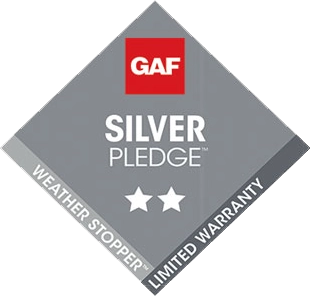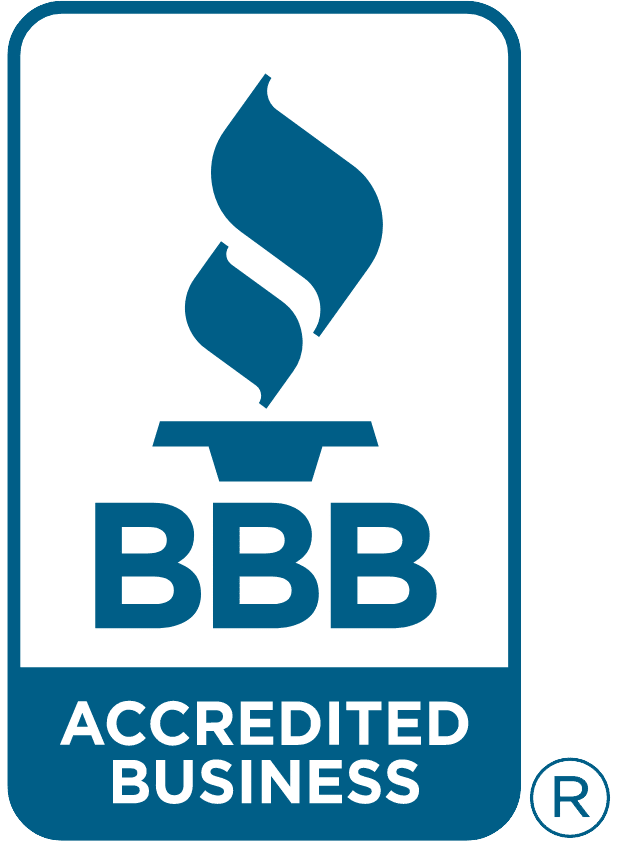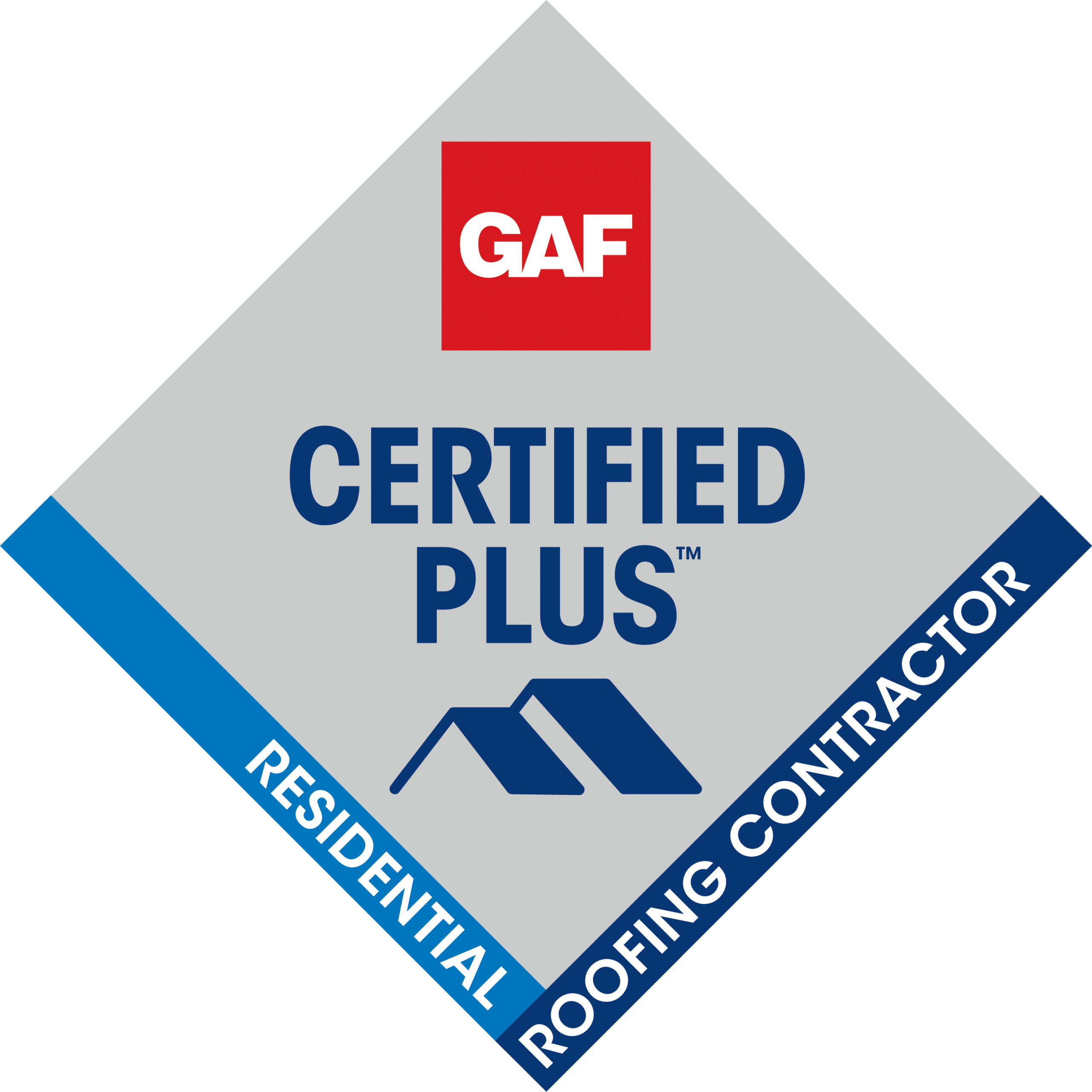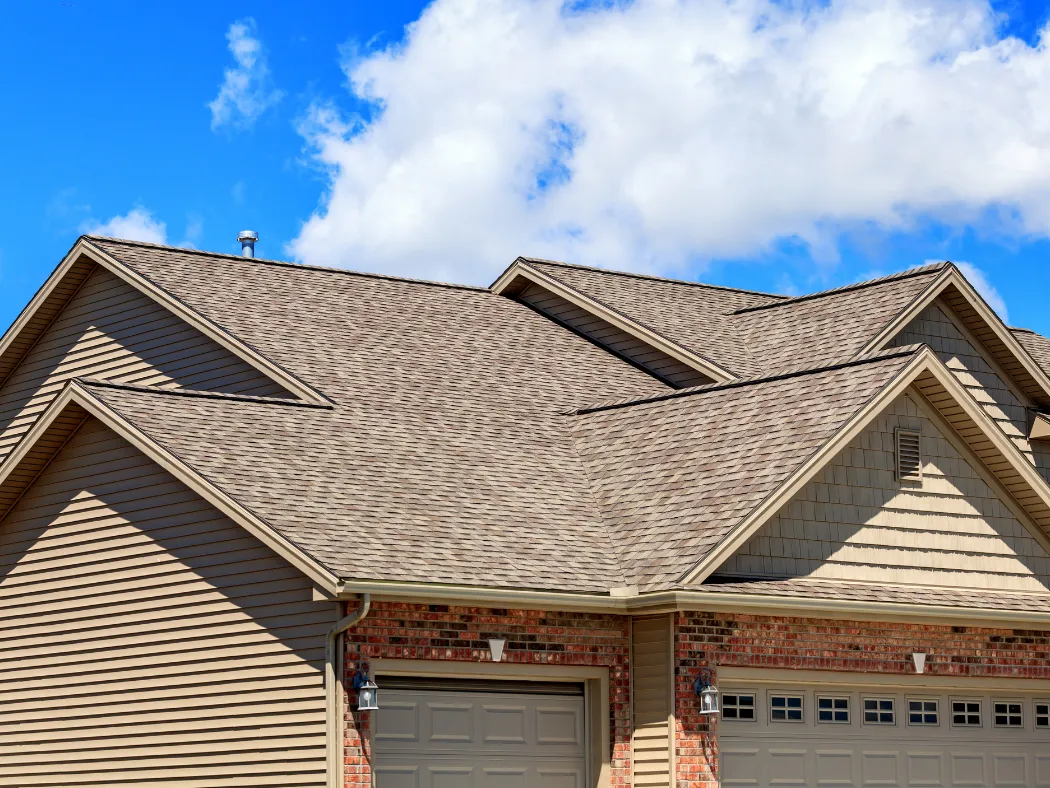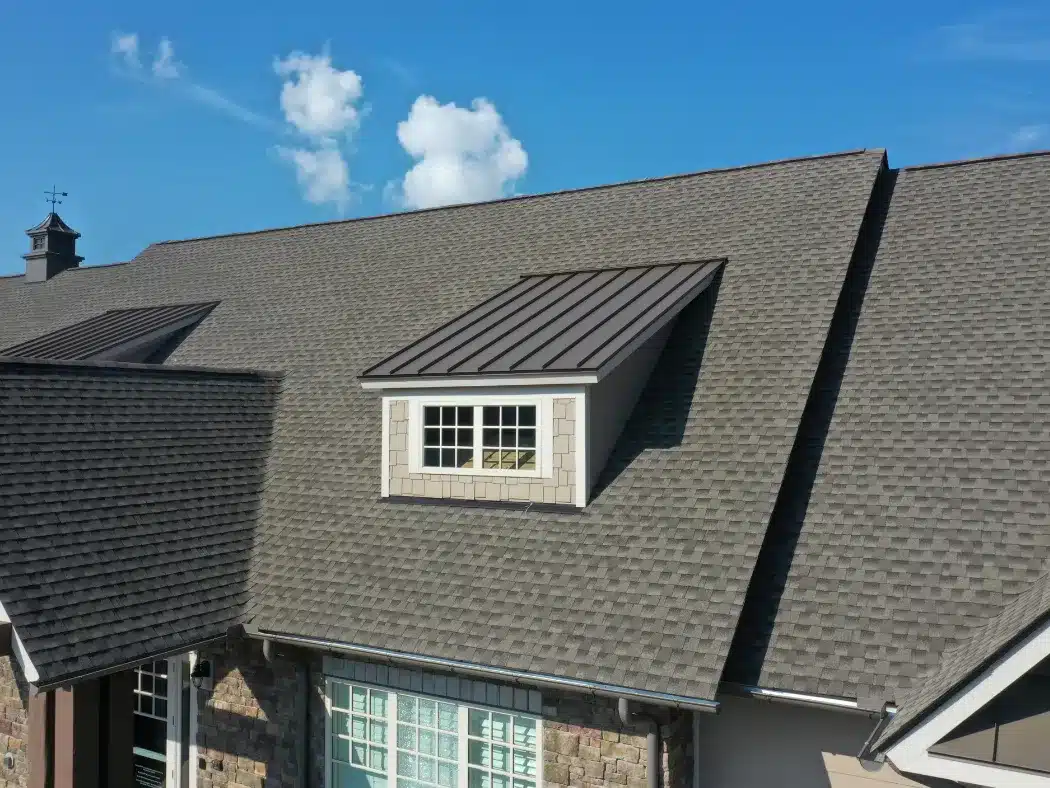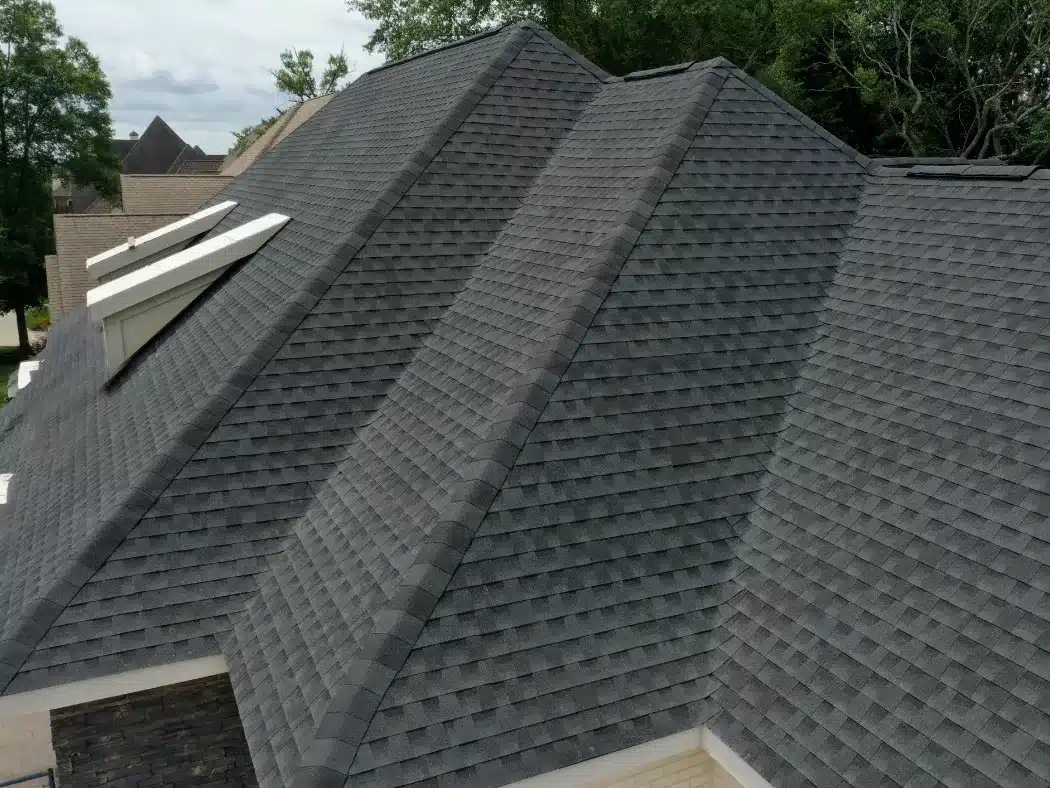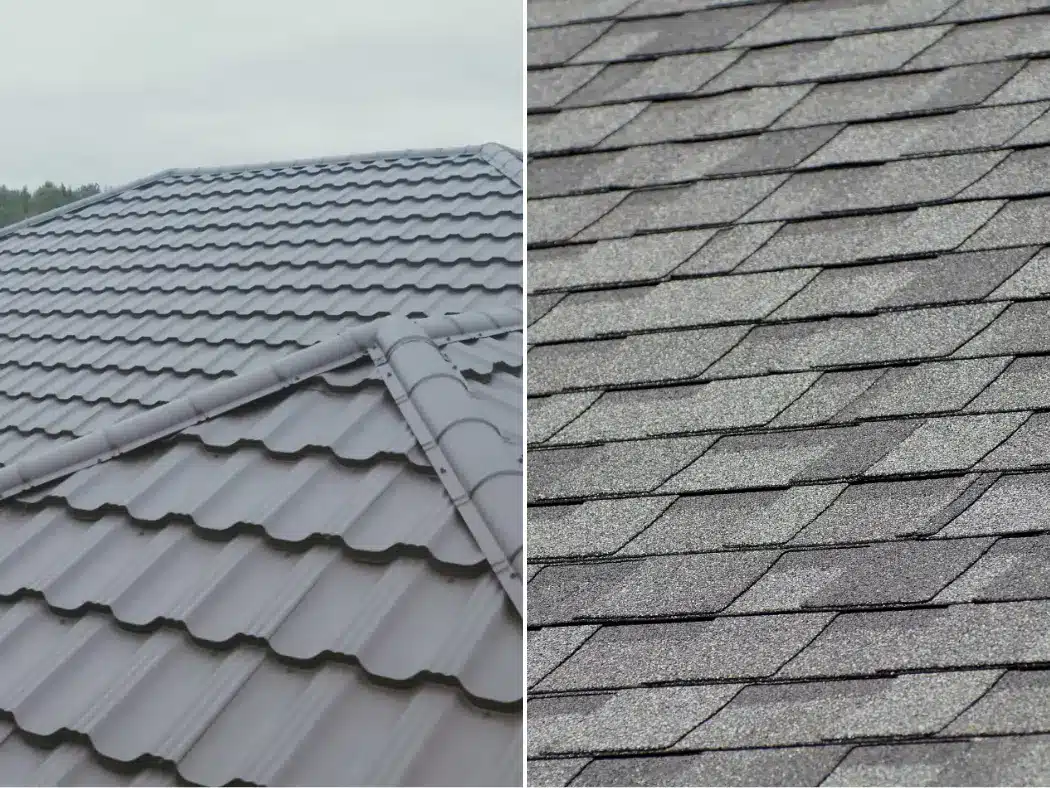Identifying roof Damage after texas hailstorm
Texas storms can wreak havoc on your residential roof, especially when hail falls. Unpredictable high winds, dense hail, and heavy rainfall can cause damage regardless of the material your roof is made of. For the safety of your roof and yourself, do not climb onto your roof to assess damage, that is a dangerous job that should be left to a professional roofing company. In this blog, we discuss how homeowners can safely identify signs of hail damage after a storm.
Missing Roof Shingles or Dents
Stay inside the safety of your home until you have verified that the hailstorm is over. Once it’s safe to do so, take a preliminary walk around your property to scout for signs of damage. Look for any shingles misplaced in your yard or for any visible signs of cracks, dents, or missing material on your roof.
Hail Damaged Gutters
From your vantage point on the ground, look for any dents or potential clogs in your gutter system on the end caps, elbows, hangers, or downspouts. Gutters damaged by hail or storm debris can’t function properly, putting your home at an increased risk for leaking, flooding, and water damage. If you notice water collecting around the base of your home, it may be a sign that your gutters are impaired.
Roof Shingles & Asphalt Granules
If you have an asphalt shingle roof, look for small, asphalt granules around your home. This can be an easily overlooked sign of hail damage. Shedding granules is normal for asphalt roofs over time as they are exposed to the elements, but shingles being struck by hail can break apart more than normal.
Roof Leaks Caused by hail damage
It’s important to check for leaks in the interior and on the exterior of your home after a storm, especially when hail is falling. Unfortunately, there is no such thing as a minor leak. Water damage can wreak havoc on your home and quickly cause major damage if not fixed immediately. Check your top floor or attic for any signs of water collecting to see if you need hail-damaged roof repair services.
Roof damage from trees
If you see any signs of obvious damage to the trees surrounding your home, it’s a red flag that there may be debris scattered on your roof in the wake of a hailstorm. If falling branches are heavy enough, they can crack, warp, or dislodge roofing materials, creating a safety hazard that needs to be addressed immediately. If there are no signs of heavy damage, there is still the possibility that small debris is collecting and adding strain to your roofing system and preventing water from draining correctly.
What To Do If You Have Hail Damage
If you notice damage after a hail storm, document it by taking pictures and writing down the date and time of the hailstorm. If there is any hail left on the ground, take pictures of it for insurance purposes. If you have a leak or a broken window that could let water in to damage the possessions in your home, make temporary fixes such as laying out a tarp or placing a bucket out to catch water to prevent further property damage from occurring. Schedule an appointment with a professional residential roofing company to make repairs as quickly as possible. Based on their initial assessment of the hailstorm damage, you can coordinate with your insurance to understand the scope of the repair project.
Texas Hail Damage Roof Repairs & Insurance Claim Assessments
When life gives you hail, WorleyByrd is the word! We provide routine residential roofing maintenance to help you prevent damage from occurring. If your home’s roof is damaged during a storm, we will document any damage, share a preliminary assessment, and provide you with options for repair or a full replacement. From inspection, claim filing, insurance correspondence, estimating, material selection, project management, and project execution, we simplify complex projects and deliver a stress-free, transparent experience for homeowners in Central and Gulf Coast Texas. Contact us today to schedule an appointment.



